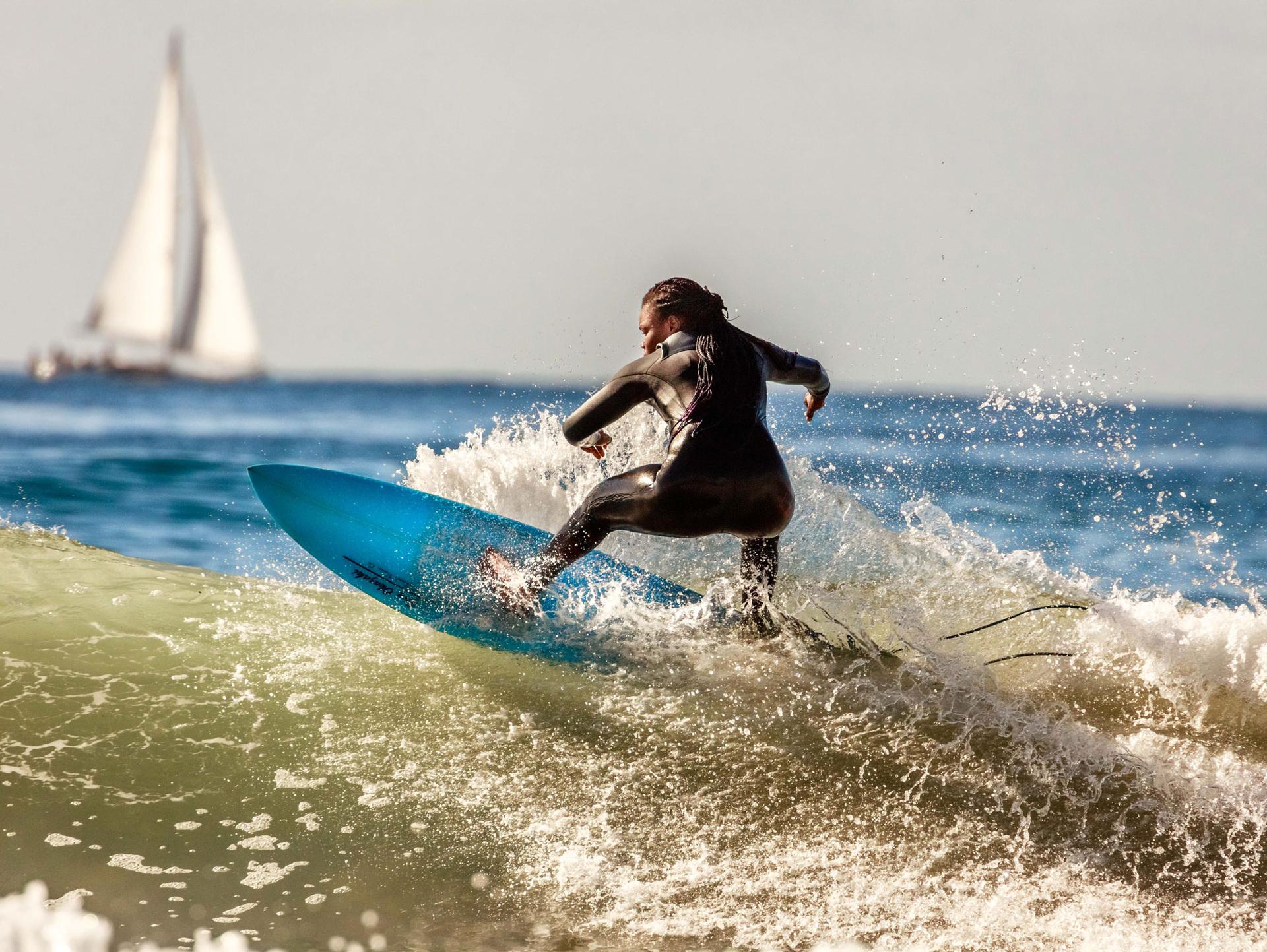An Olympic hopeful from Senegal hopes to inspire more black women to surf
Khadjou Sambe, 23, rides a wave at Santa Monica State Beach on Jan. 6, 2019. She says she enjoys surfing in California because the waves are different to those she grew up riding in Dakar, Senegal. “She surfs just as well as the men,” according to her coach, Rhonda Harper, who has been training Sambe.
On a crisp winter morning at California’s Santa Monica State Beach, Khadjou Sambe is running through a warm-up drill with her surfing coach Rhonda Harper.
After the 23-year-old finishes her stretches, she moves slowly toward the water. It’s one of Sambe’s last days in the US. Her six-month visa is about to expire and she will head back to her home in Dakar, Senegal. Sambe has been training with Harper in California with the hopes of eventually competing in the 2020 Olympics, the first time that surfing will be part of the Summer Games.
Related: Ada Hegerberg, first female Ballon d’Or winner: ‘A huge step forward’
For Sambe, the vibe at Santa Monica is a novelty, quite unlike her beach back home.
“[Here] you can see different surfers, different waves, different people,” Sambe says.
Yet at this world-famous beach, on this Sunday morning, Harper, Sambe and another young female surfer, Bhella Bell, are the only black women as far as the eye can see.
“It’s uncomfortable to come because it’s so white,” says Rhonda Harper, a longtime surfer, and founder of the organization Black Girls Surf.
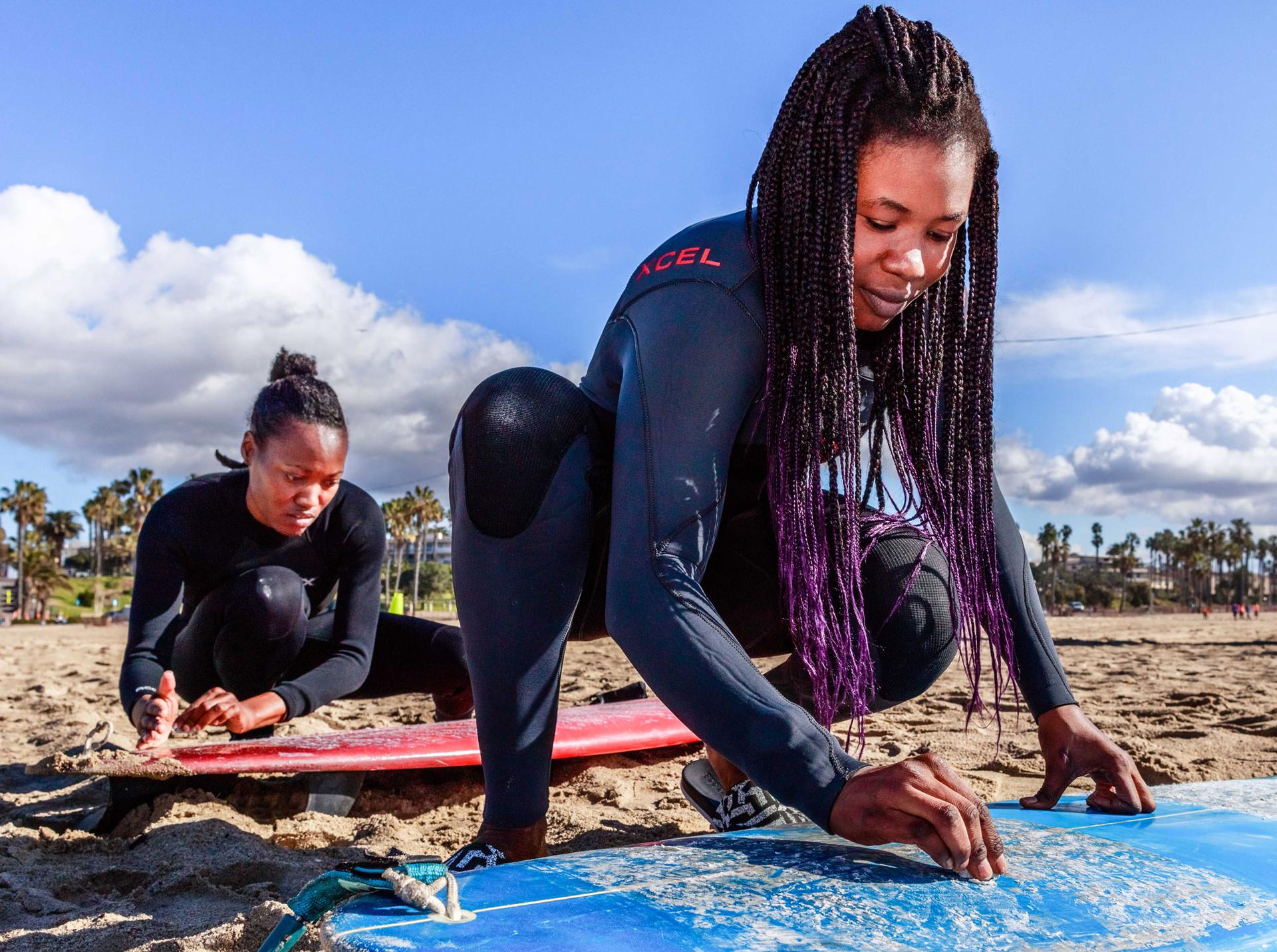
As they lunge and stretch, the women laugh and joke amongst themselves. Harper says keeping it light helps defray the sense of isolation.
But Harper is tired of this. That’s why she is working with Sambe. Harper believes the only way to get more black women riding waves is to coach them and then help them travel to international surf contests where they will be seen. But black surfers on the professional circuit are rare despite the multicultural origins of the sport.
Related: Brazil’s Maya Gabeira conquers 68-foot wave and Guinness World Record
Surfing has long been part of Hawaiian and Polynesian cultures. It waned after missionaries arrived and effectively banned the sport, as part an effort to erase native culture. Historians say forms of surf riding were also present in parts of West Africa as far back as the 1800s and in northern Peru. But in the 1960s, famous films and television shows, such as “Endless Summer” and “Gidget,” created perceptions that surfing is an all-white sport. In the US, segregation laws that blocked people of color from accessing public beaches perpetuated this image. Harper hopes to change this by helping more black women like Sambe become part of professional surfing.
Sambe’s path to surfing began as a small girl, using bits of broken boards to paddle the waves near her family’s home in Dakar. She was the only girl plunging into the rocky waters. Her cousins and uncles surfed frequently, but Sambe was constantly told the sport wasn’t for her.
“When I started surfing, many people told me to stop, people said this isn’t something for girls,” Sambe says. “But I didn’t listen, I continued.”
Her own parents disapproved of Sambe’s penchant for dashing into the ocean to catch waves. In her Muslim family, this was frowned upon and they tried to stop her. So, Sambe would sneak out.
“I would jump out of the window and when I got back I would say, no, I was here, I was napping,” she says.
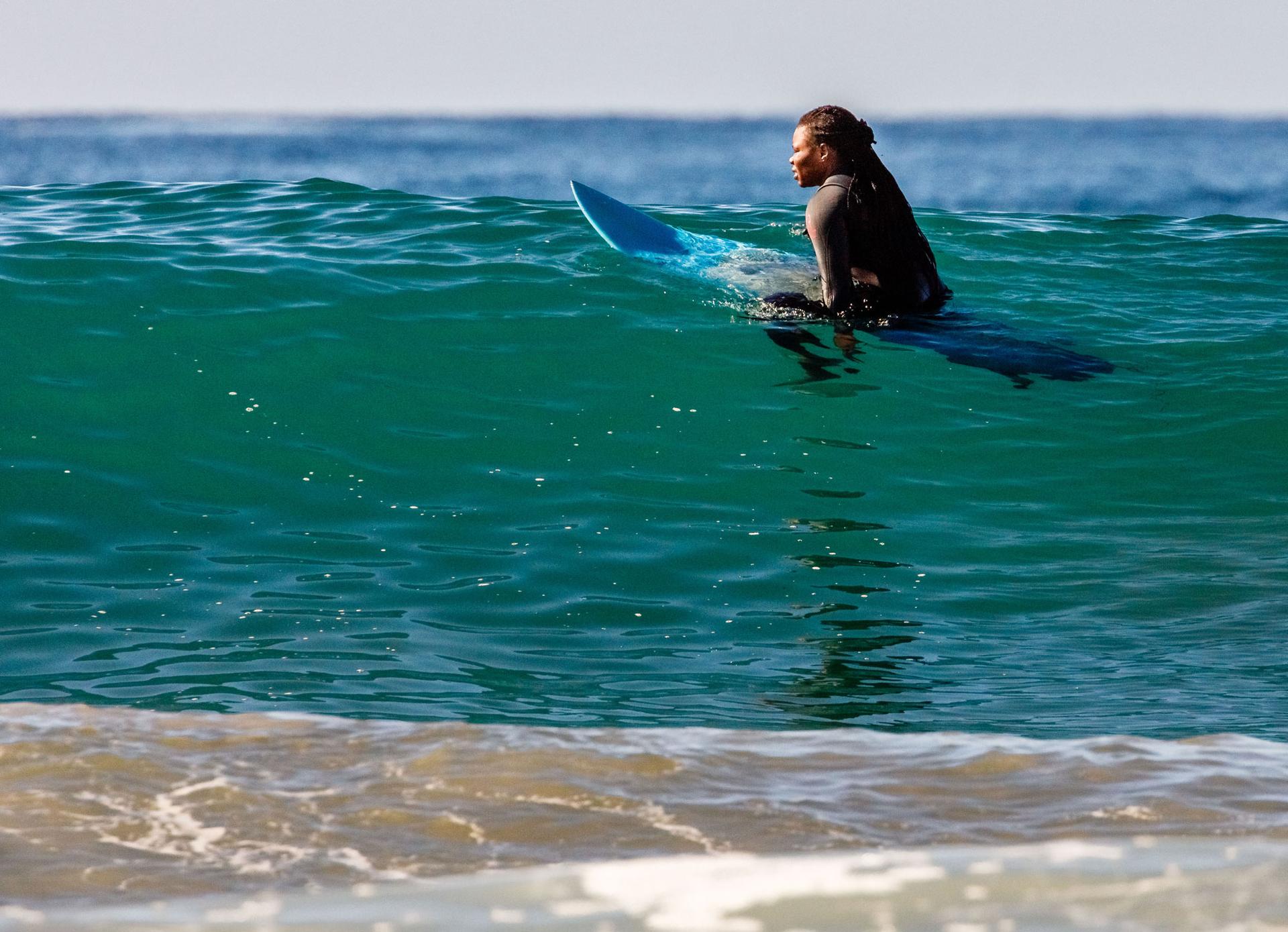
Sambe broke other social norms too. She dropped out of school at 13, and she didn’t find herself a husband when she got older. Eventually, Sambe moved in with her grandmother who supported her desire to surf and follow her dreams.
“When people would say I shouldn’t continue with surfing, [my Granny] would say, ‘Go for it, do what you want,’” she recounts.
Sambe eventually found work at a foreign-owned surf camp in Dakar. This was where Harper spotted her in a picture on Facebook, holding a surfboard.
Related: Finally, more than ‘love’ for Serena Williams: Tennis star inspires new rules
Harper, then a reporter and a surf contest judge, was increasingly appalled at how few black women surfers there were, especially at the professional level.
“Being frustrated with not seeing people that look like me, I decided to just create something for us [where] we could see ourselves,” she says.
In 2014, Harper and a colleague launched an international contest just for surfers of African descent. She scoured the internet to find women surfers around the world, and was overjoyed when she saw Sambe’s photo.
“We started looking through West Africa and I just happened on this camp called Malika Surf Camp and there was a black woman in these photos holding a surfboard,” Harper says. “Immediately I got excited. Alright, this is Senegal, let’s do this.”
When she saw Sambe surf, she knew Sambe had talent. Harper used social media to raise money and bring Sambe to California where she could coach her.
“Her style of surfing, her ability to read the waves, is second to none,” Harper says of Sambe’s surfing. “She surfs just as well as the men.”
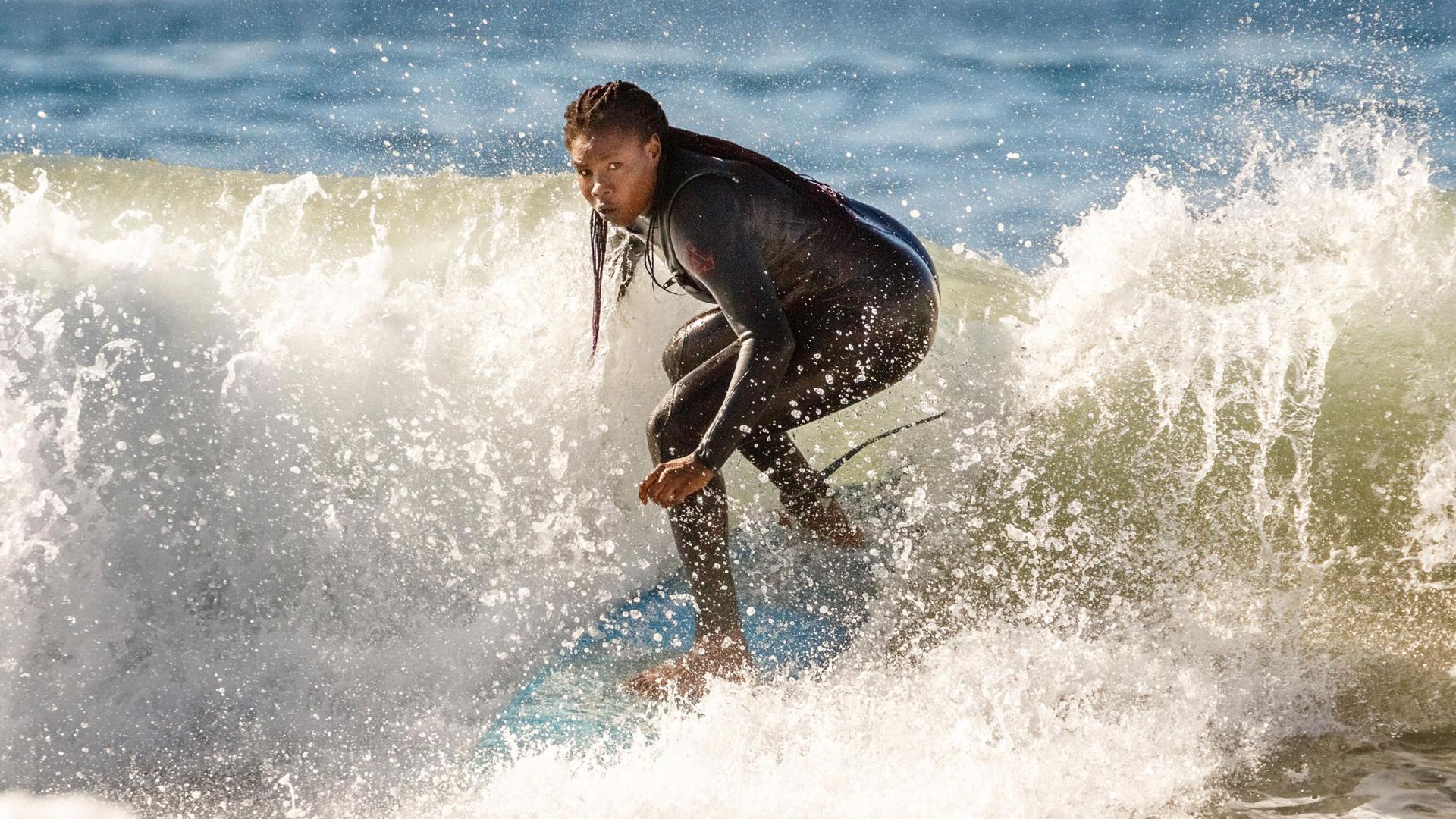
According to Harper, the biggest hurdle for talented surfers like Sambe who want to surf professionally is having enough money to go to qualifying events around the world. An average surfer spends anywhere between $50,000 to $60,000 a year in travel, fees and equipment, Harper estimates.
“It is absolutely an elite sport and there needs to be a change,” she says.
But competing in these contests is key to Sambe’s dream to represent Senegal at the 2020 Olympics. For Sambe to qualify, she has to get herself to places like Japan and Peru to compete, which the Senegalese surfer can’t do on her own. So her coach, Harper, is now fundraising through GoFundMe and Facebook so that Sambe can travel to compete and earn the necessary points to be in contention.
While in California, Sambe’s training regimen includes finding waves up and down the California coast, from Santa Cruz beach in Northern California down to Venice and San Diego.
The only other black women she has surfed with have been through Harper’s organization, Black Girls Surf.
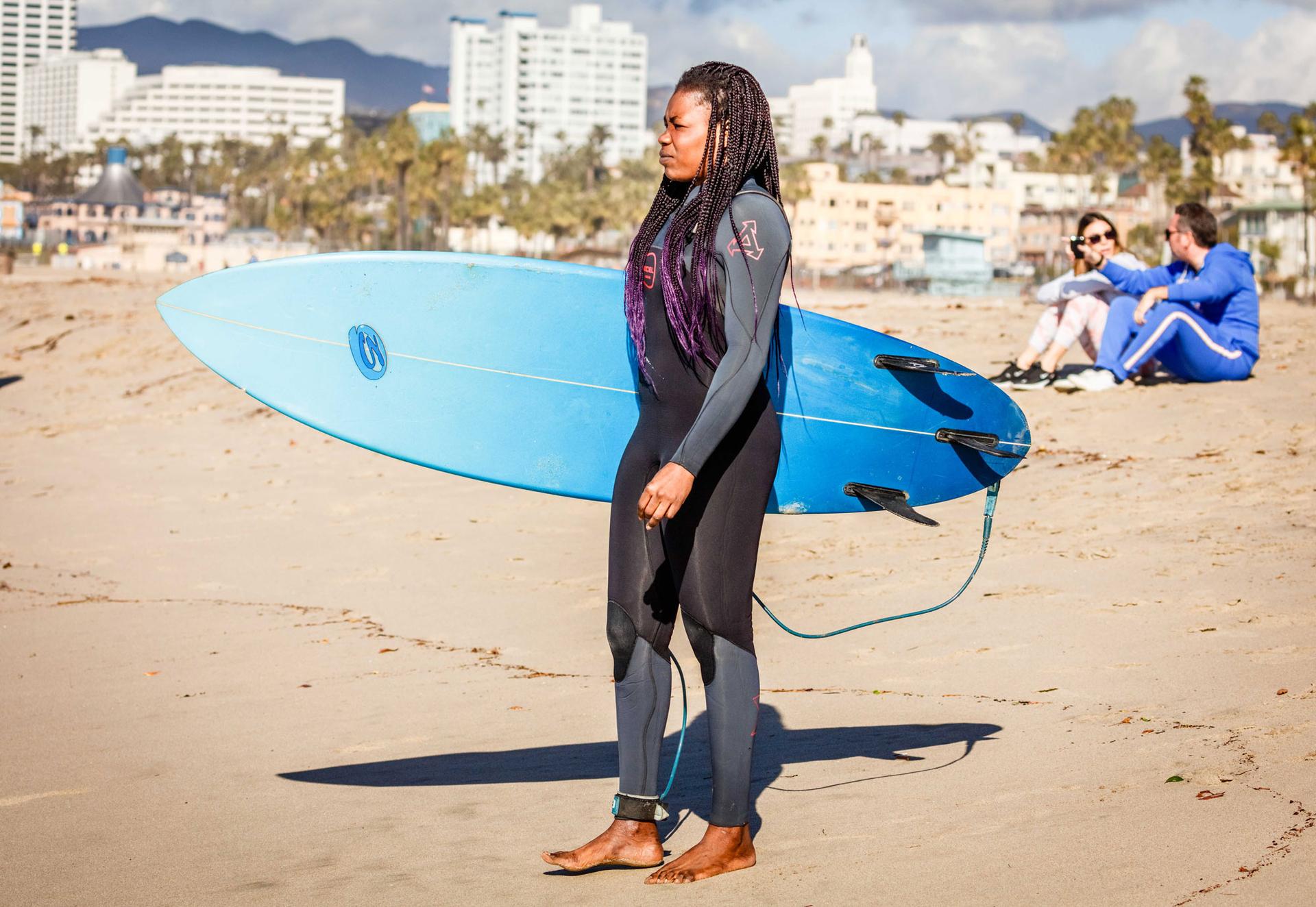
Harper says young women of color need more than just support and coaching to surf. She has found herself acting as security for her surfers who’ve been harassed out on the ocean by white surfers.
“I see the aggression before they go in,” Harper says. Her surfers often ask her to come in the water and surf with them. But she doesn’t, for one big reason, “I stay out of the water for their protection,” she says.
Harper says she has a “bird’s eye view” from the sand, which she loses when she’s on a surfboard.
The world of surfing is known to be extremely territorial. Local surfers don’t like people from elsewhere crowding their surf breaks. But Harper says what black women surfers experience is beyond what’s known as localism.
“I’ve never seen someone harassed as much as Khadjou [is harassed] in the water,” Harper says. “It’s the microaggression, it’s the subtle cutting off. It’s the subtleness of the aggression. [But] some are overt [and] they will just run you right over.”
Harper calls it “Surfing While Black.”
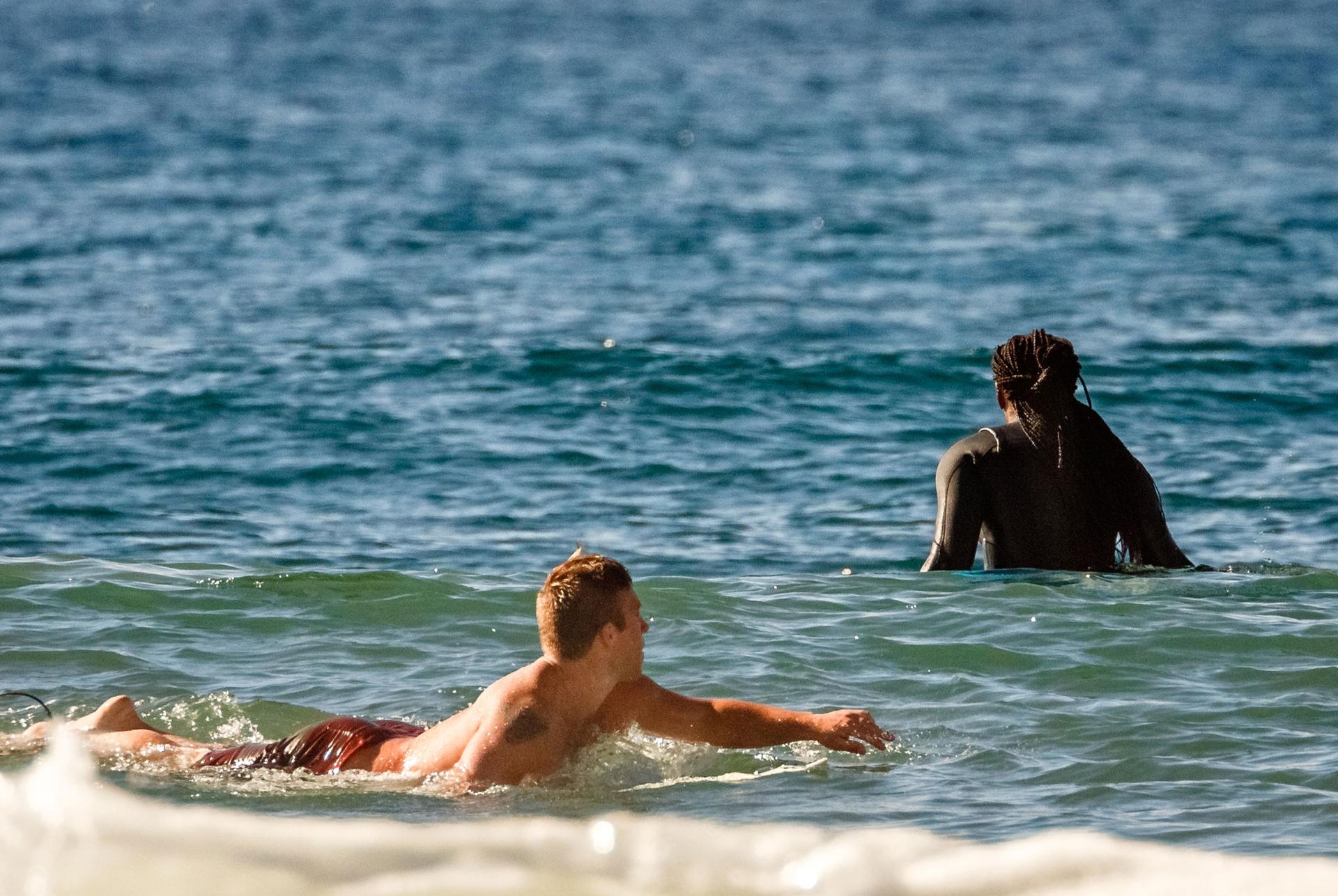
Sambe has had to adjust to being treated aggressively in the water.
“In Santa Cruz, I get snaked a lot,” Sambe says. Getting snaked is when another surfer cuts in or jumps the queue of surfers waiting for a wave. “I wonder if it is because I am black. I wasn’t sure why they were doing it,” Sambe says.
Then, late last year when Sambe was surfing at Venice Beach in Southern California, a white surfer pulled the cord attaching Sambe’s friend’s ankle to her board, causing her to spill, she says.
Again, she wonders why it happened.
“We thought it was maybe because we were black. We don’t know. In Senegal that doesn’t happen,” Sambe says.
That incident happened to be caught on camera by a video crew from NBC who was out that day shooting the black women surfers.
“The person who pulled the leash had talked to my colleague at the time and asked what [we] were shooting, my colleague responded, ‘We’re shooting with Black Girls Surf.’ [The surfer] said some, not-so endearing things. You know, called them a joke, and then a few moments later the leash pull happened,” says Jeff Mercado, with NBC and one of the reporters at Venice that day. “Once we added things together, we came to the conclusion that this wasn’t done on accident. This was very intentional, he had intent.”
Harper views localism as another form of colonialism.
“The beaches are being re-colonized by white males,” she said. “The thing about localism that cracks me up is that you truly can’t say that you own this beach or this is your area. That’s public property.”
The Venice leash-pulling incident went viral, and Harper said she began to receive threats. People accused her of using the incident to slander surfing and profit from it, she says. This baffles Harper as it was her surfer who was the victim, but Harper now employs a security guard if she and her surfers go to Venice.
Harper’s preferred beach in Los Angeles is a spot at Santa Monica called Inkwell, where she and Sambe were training on Sunday morning.
“This was a segregated beach during the Jim Crow area, 200-square-foot, roped-off area for Negros only,” Harper says.
Inkwell was one of only two places blacks could go to the beach in Southern California, until the Civil Rights Act of 1964 outlawed segregation.
“So this is a historical beach,” she said, “[Inkwell] feels like home.”
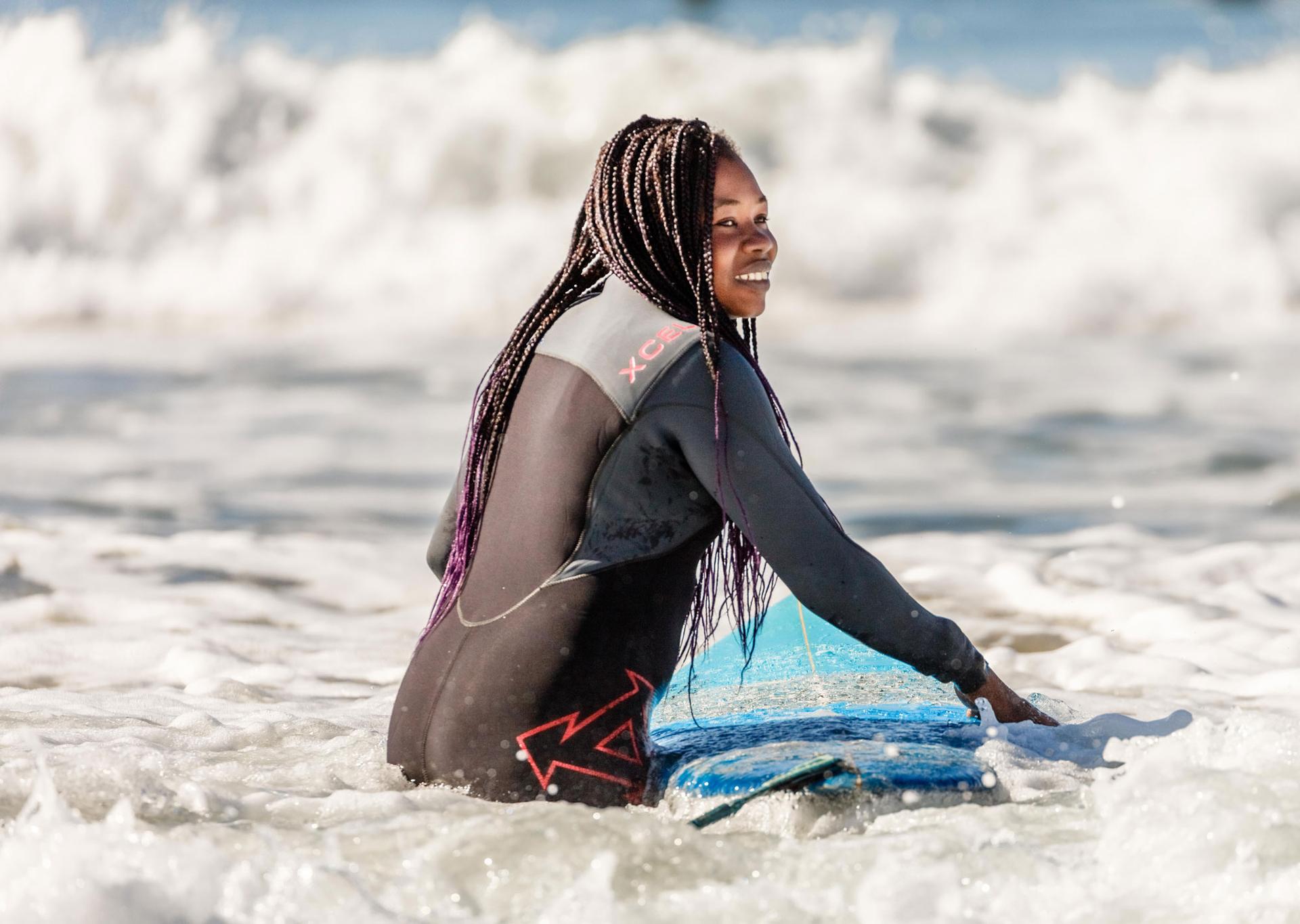
After Sambe paddles out she doesn’t jump right into the fray of surfers catching waves. When she finally does, she rides it smoothly, causing Harper to thrust her fist in the air and declare, “Yes! That was good.”
Harper also has a critique of her surfer. “She didn’t switch stance,” Harper says. Something to work on, the coach notes.
From the tower right behind, a lifeguard comes out and approaches Harper.
Remy Smith, a captain with the Los Angeles County Fire Department Ocean Lifeguard Division, is also watching Sambe catch the wave and is impressed.
“I came out from my tower because I saw some African American females surfing, and you don’t see that very often, and it was pretty cool to see them ripping down the wave,” Smith says.
Smith himself is African American (and half Australian) and he says he doesn’t see many black women surfers.
He says part of the problem is that unlike when he was a kid, swimming isn’t taught in school anymore.
“Because of all the budget cutbacks, you have be a little bit more persistent or affluent to have access to those pools to learn how to swim,” Smith says.
He admires Sambe’s tenacity. He knows well what it is like to be the only person of color in the water.
While Sambe is hungry to surf in the Olympics, she also hopes other young black girls will see her riding a wave and feel like they too can get out there.
“It is so amazing that I am here training [with] Black Girls Surf,” she says. “I am here for my country, I am here for Africa, I am here for Black Girls Surf [to] represent black people.”
Interview with Khadjou Sambe was translated from French to English by Emmanuelle Bourlier.
Our coverage reaches millions each week, but only a small fraction of listeners contribute to sustain our program. We still need 224 more people to donate $100 or $10/monthly to unlock our $67,000 match. Will you help us get there today?
